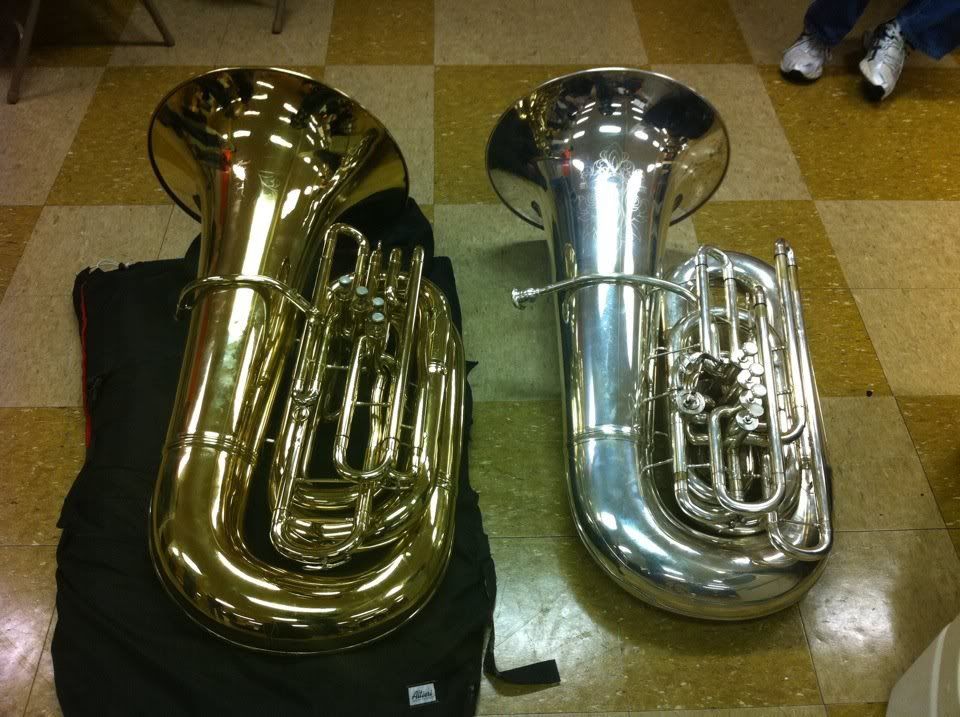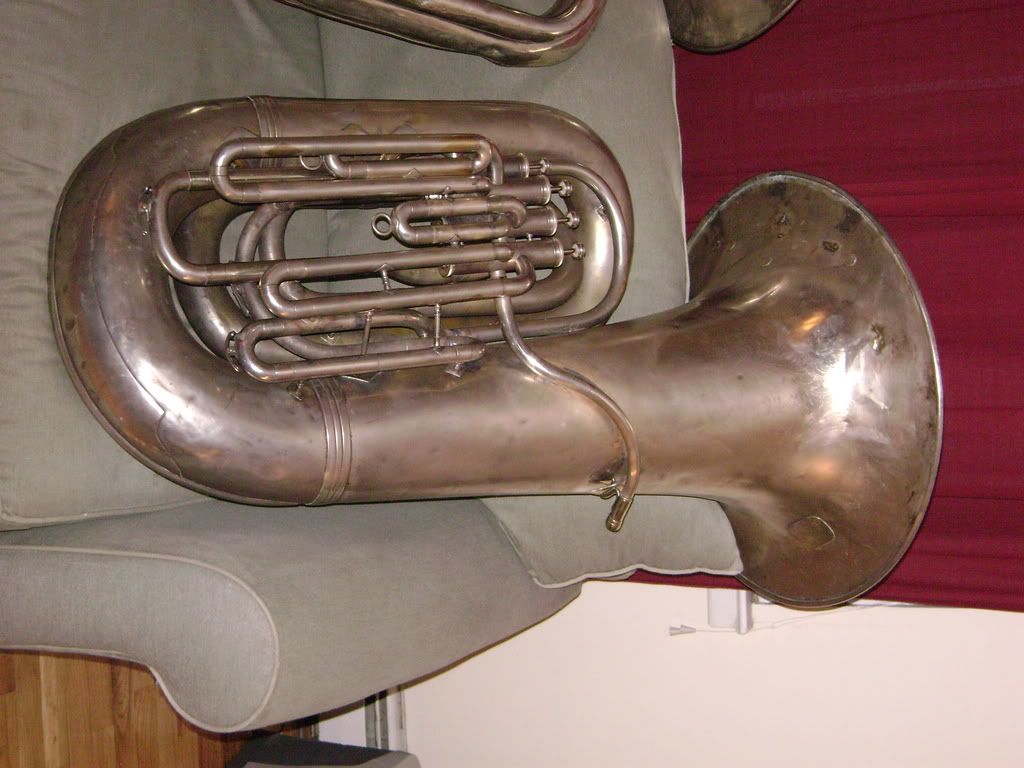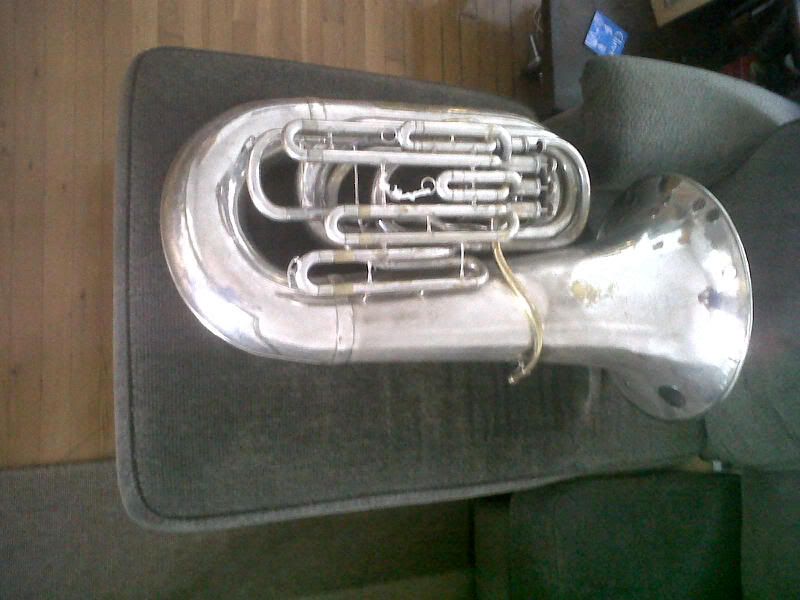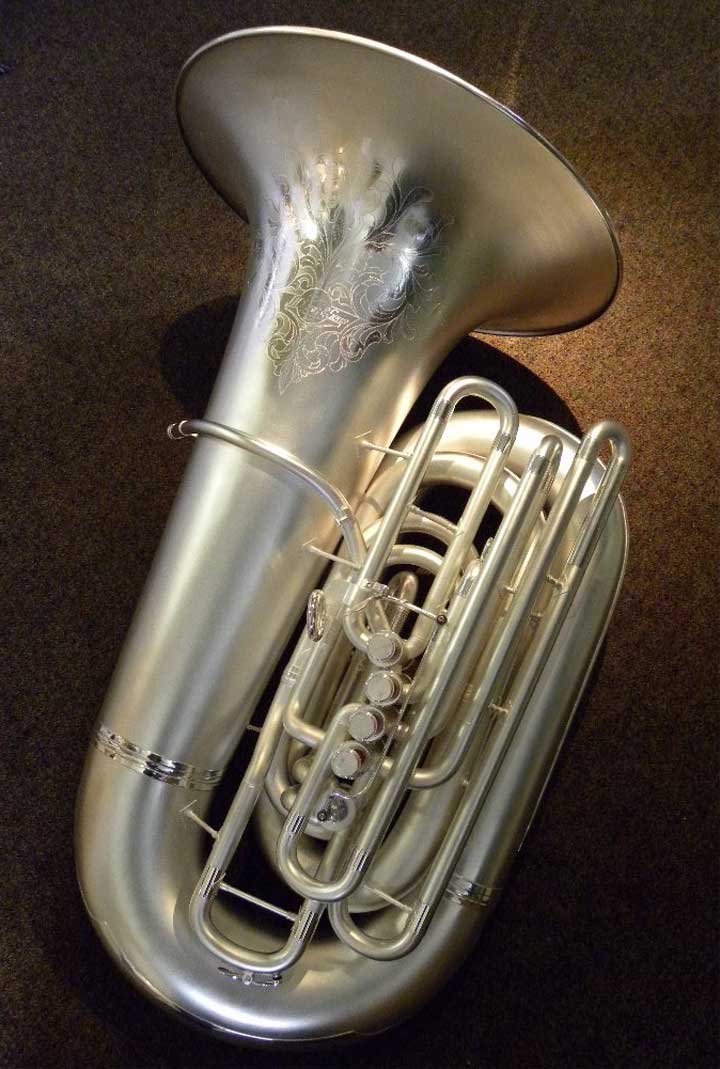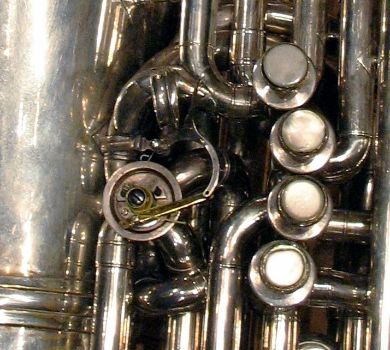Wow,
I should read more often! I need to clear up a couple of things, if I might;
- although I have taken measurements of the CSO Yorks, that was not anything that was used by the Kanstul Company. They have made their own measurements. I merely wanted to sort out the truth about what these two instruments were, and are. The serial numbers would lead one to believe that they were made about 1 1/2 years apart, ie., that they were two factory custom one-offs. The older horn, Jake's original, now known as CSO York #2, is about 1 1/2" taller and has an approx. 1 1/2" shorter leadpipe than the newer York, now known as CSO York #1. For this reason, the newer York is more ergonomically comfortable, and since it is virtually all-original York, it is the better overall player. York #2 has had more damage, so it has the non-original leadpipe installed by Mr. Geyer, which is like the mouthpipe the first Hirbrunner HB-50's had, and some of the valve tubing was replaced by Peter Hirsbrunner following the damage in shipment to Switzerland for copying. The main place that makes a difference is in the 4th circuit, I think, because the beefy European nickel-silver tubing is significantly thicker than the original thin brass tubing, actually choking down the bore a little in the 4th valve. Also, the European 5th rotor is not nearly as large as the original York 5th rotor, which also has to have an effect on the low range playability. Suffice it to say that these two instruments are significantly different.
- the Kanstul model 5490 Grand CC, listed as a 5/4+ CC, is taller than the tallest CSO York, but has a slightly smaller diameter bell throat. The Kanstul 5490 is not the same size as the CSO York, but it does have a valveset and leadpipe that are taken from the CSO York measurements. I have not done a comparison measurement of the 5490 against the 6/4 York, but they are going to look different because the Kanstul is a more open-wrap and the CSO Yorks are really compact. The body taper of the large Kanstul tubas, as I understand it, are from the Martin Mammoth. For anyone that wants a really nice and sweet new yellow-brass 4-front-piston BBb that plays like a Martin, the Kanstul CTU 900/4B is the ticket. I've had collectors and Martin aficiandos play-test (and buy) the Kanstul, telling me that there is nothing else out there that comes even remotely close to the Martin-like qualities of the Kanstul 900/4B.
- as to the bell alloy issue, I was told that the York bells were made with an alloy called #454 naval brass, if I remember correctly. The J.W. Yorks were probably made with brass made in Michigan, and the copper from Northern Michigan mines also contained traces of iron ore, something I've been told by Michiganders and by the results from the lab tests on metal samples. The naval brass, when annealed dead soft is very soft, and when worked, gets very hard, and rather quickly. The J.W. York craftsmen were amongst the first makers, if not the very first maker to spin the bell flares and then braze them to the bell throat, as opposed to the cut-and-fit-pieces method. And, although I do not know the formulas, the bells were tempered more in some areas than in others to bring out certain sound characteristics. My first clue about a difference in bell metallurgy was when working on Jim Self's York 692 CC. Raw, unlacquered brass when it arrived at my shop, I didn't suspect anything being different about the bell as I removed a few dents, and even when buffing it. But, when we were chemically-cleaning the instrument and then bright-dipped it, my assistant called to me as he was rinsing it, "Hey Lee, look at this - the body is yellow, and the bell is pink!" The vast majority of surviving Michigan-made Yorks are silver-plated, so the metallurgy is hidden. Some have only a naval brass bell flare, some the entire bell, and a few are made more, or entirely of the naval brass. The one constant I find in old Yorks is that they are all different. I'm told that it is very difficult to find this alloy in sheet form anywhere anymore, but I'm told that Kanstul has what is the closest thing to the original that is available, and it is a bit more expensive. I think the Kanstul bells may look a little more red because of some of the manufacturing processes. Where I've buffed and spot-lacquered on one of these bells, the area spot-lacquered is not nearly as dark as where the original lacquer is, but much like the original York color.
- as to what the difference in bell material and tempering does, we have replaced bells on a Nirschl-York and several Holton 6/4 tubas, both BBb and CC, and the difference is stunning. Tests have concluded that when a 6/4 Holton is fitted with a Kanstul York 6/4 copy bell, the tone quality and apparent intonation changes, as well as the ease of tone production. In a professional orchestra setting, it was noted that the tuba more easily blended with the tympani and string basses. With the 4/4 York-copy instruments, I have particularly noted how that the instrument does not overpower a small room, but when taken into a large hall, the sound seems to grow to fill whatever space it is in. I frankly had my doubts about a .656" bore instrument filling a hall, but the 4/4 size Kanstul instruments will do it.
- speaking of bore, someone had commented on a .750" bore seeming small for a 6/4 instrument. Comparing the bore of rotary vs piston instruments is like comparing apples and oranges. For one thing, the traditional European instrument has a longer leadpipe, so the valves are further down the bore of the instrument, so they have to be larger. Piston instruments normally have a rather short leadpipe, so the .750" bore of an American 6/4 tuba valveset is at about the same place in the bore as where you would find .750" in the leadpipe of an Alexander 164. The big Martins tended to have a .689" bore, so they are generally not as thunderous an instrument as the big Yorks and Conns were, but they were sublimely sweet players. The model 5490 has been popular-enough that I have had trouble getting, or keeping one in the shop. I did have one opportunity to just relax and play one in an ensemble. No, it is not the CSO York, but it is plenty big for us mortals, and has a low range to die for, as well as mid' and high ranges that are very pleasant. It is a little more aggressive-sounding to me than the 6/4 York sound, but still very pleasant. If I were to accept a full-time playing gig and needed a big horn, I would buy one of these and not look back. I've spent many hours "in the saddle", sometimes with instruments I did not relish, but I could enjoy spending many hours behind this tuba.
I hope this is useful, or at least interesting

Lee A. Stofer, Jr.
